Top 12 Questions About The Low Carb Sourdough Starter

Low carb sourdough starter: Making sourdough with a low-carb twist is an exciting way to enjoy bread and baked goods that support gut, brain, and body health, while also aiding in weight loss. However, your low-carb sourdough starter behaves a bit differently than traditional starters because it’s made with low-carb ingredients instead of high-starch white flour. This means that bringing your low-carb starter to life requires a bit more patience and a flexible mindset. If you’re ready to embrace the process, you’ll find it to be a rewarding experience.
When you join the Sinless Sourdough membership and community, you’ll receive a Sinless Sourdough Low Carb Dehydrated Starter delivered right to your door. This starter is shipped in its dehydrated form, ensuring it stays fresh and ready for activation once it arrives. Simply follow the easy rehydration instructions to bring your starter to life and begin baking your delicious, low-carb sourdough! With the support of our community, you’ll have all the resources you need to succeed on your low-carb baking journey.
1. What Is A Low Carb Sourdough Starter?

A low-carb sourdough starter is the key ingredient for making low-carb sourdough bread. Low carb sourdough is a fermented food. It uses a fermentation process with wild yeast and lactic acid bacteria, reducing starches and carbs. This makes it perfect for those on a ketogenic or low-carb diet.
Sourdough starters are often sold in dehydrated forms, either as powdered or in chunks. The powdered version is generally preferred because it’s more convenient—there’s no need to grind it yourself. Simply rehydrate the powder with water, and it’s ready to be used to kickstart your sourdough baking process. The chunk form, while still effective, requires extra steps as it needs to be ground into a fine powder before use. The powdered starter offers a quicker and easier way to begin cultivating your own wild yeast culture, saving time and effort in the preparation process.
The starter typically includes low-carb ingredients and ferments for several days to develop beneficial microorganisms. This keeps the bread’s carb count low while maintaining the tangy flavor of traditional sourdough. The starter is a living culture that must be regularly fed and nurtured to stay effective. By maintaining it, you’re preserving a tradition, creating a piece of history that can last for generations.
2. Why Won’t My Low Carb Sourdough Starter Ferment?
Identifying The Causes Of Fermentation Problems
When your low carb sourdough starter isn’t fermenting properly, there are a few common reasons to consider:
- pH of Water: The pH of the water used in your starter could affect fermentation. Water that’s too acidic or too alkaline can hinder the process. Ensure the water is close to a neutral pH (around 7).
- Temperature: Fermentation requires warmth. A starter thrives best at temperatures between 75°F-80°F (24°C-27°C). If it’s too cold, the fermentation process won’t activate, and the yeast won’t grow.
- Odors in The Environment: Strong odors from things like cigarette smoke or cleaning chemicals can inhibit your starter’s growth. Ensure your starter is kept in a clean and odor-free space for optimal results.
If these factors are addressed, your starter should begin fermenting properly.
3. What Are The Signs Of A Healthy Living Low Carb Starter?
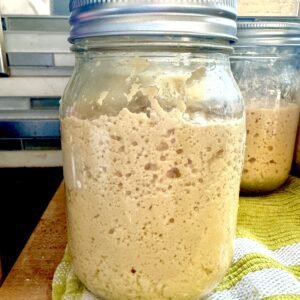
Signs Of A Healthy And Active Starter
- Bubbles: A healthy living low-carb sourdough starter will show both large and small bubbles throughout. It won’t be frothy like traditional starters but will have consistent air pockets, indicating active fermentation.
- Rising and Firmness: The starter will begin to peak above the top of the jar, demonstrating that it’s growing and rising. It will also have a firm texture, making it easy to work with, but it will still be slightly spreadable.
- Distinct, Pleasant Aroma: The starter will have a fresh and tangy smell, indicating proper fermentation. It shouldn’t have any off or overly sour odors.
- Feeding and Activity: A living low-carb starter needs regular feedings with low-carb ingredients, such as almond flour or coconut flour. It should show signs of activity after 6-12 hours, with bubbling and rising.
- Consistency and Texture: The starter will be thick and almost stiff, yet full of large and small holes. Hootch (the liquid on top) will appear effervescent, a sign that the fermentation process is strong and active.
- Signs of Fermentation: When transitioning from a dehydrated starter to a living one, signs of fermentation typically appear within 3 to 5 days, depending on factors like water, temperature, and how often it’s fed.
- Ready for Use: A Sinless Sourdough Low Carb Living Starter is considered ready for use when it reaches the top of a 16-ounce jar. This shows that it has fully fermented, doubled in size, and is at its peak activity, ready to be incorporated into your low-carb sourdough baking.
If your living low-carb starter shows these signs, it’s healthy and ready for baking. If not, try adjusting its feeding schedule, ingredients, or temperature to get it back on track!
4. How Do I Keep My Low Carb Sourdough Starter Alive?
Maintaining A Healthy Starter For Long-Term Use
To keep your low carb sourdough starter alive and active, regular feeding is essential. Here’s how to manage your starter:
- Store it in the fridge: After feeding it, place the starter in a jar with the lid loosely on and store it in the fridge.
- Feed regularly: When you’re not baking, feed your starter at least once every 7-10 days. Remove the starter from the fridge, feed it, and let it sit at room temperature until it becomes active again.
- Use it or refresh it: Before using your starter for baking, ensure it’s well-fed and active. After feeding wait about 3 hours to bake.
With proper maintenance, your starter can last a lifetime and longer.
5. I Cannot Keep Up With My Starter. It’s So Powerful It Keeps Fermenting To The Top Of The Jar Faster Than I Can Bake. What Do I Do?

Managing An Overactive Starter
If your low carb sourdough starter is out of control and ferments too quickly, there are a few ways to manage it:
- Use 1 Cup For Baking: When you’re ready to bake, take 1 cup of starter for your bread recipe.
- Feed Less: If your starter is super active feed every 24 hours instead of every 12 hours.
- Store The Rest: Put the remaining starter (about ¼ jar) back in the fridge with a tight lid for storage.
- Feed Before Use: When you’re ready to bake again, remove the starter from the fridge and let it warm to room temperature. Feed it, then let it sit for several hours or overnight before using.
By following these steps, your starter can remain healthy without overflowing.
6. Can You Freeze A Low Carb Sourdough Starter?
Freezing your low-carb sourdough starter is a great way to preserve it for long-term storage. Here’s the best way to do it:
1. Prepare the Starter for Freezing
Before freezing, make sure your starter is active and healthy. Feed it one last time, and let it ferment at room temperature for a few hours so it’s bubbly and active.
2. Portion It Out
Instead of freezing all of your starter, it’s a good idea to divide it into smaller portions. You can freeze it in small jars, containers, or even ice cube trays to make it easier to thaw and use only what you need later.
3. Place in an Airtight Container
Use an airtight container to prevent freezer burn and preserve the starter’s quality. If you’re using a jar, make sure there’s some room for the starter to expand as it freezes. If you’re using a container or bag, make sure it’s sealed tightly to keep moisture out.
4. Label the Container
Make sure to label the container with the date you froze the starter. This will help you keep track of how long it’s been in the freezer. Ideally, use it within 6 months for the best results.
When You’re Ready to Use It:
1. Thaw the Starter
Take the frozen starter out of the freezer and place it in the fridge for about 12-24 hours to thaw slowly. If you’re in a rush, you can let it thaw at room temperature for a few hours.
2. Feed the Starter
Once thawed, feed it with your preferred low-carb flour and water, and let it sit at room temperature for a few hours to reactivate the yeast. At first, it might look a bit sluggish, but it should start showing signs of bubbling and rising after a few feedings.
3. Give It Time
Give the starter a few feedings (usually 1-2) at 12-hour intervals to help it regain its full strength and activity. Make sure it’s bubbly and has a pleasant tangy smell before using it for baking.
Tips:
- Use a Small Portion: If you’re unsure whether you’ll use your entire starter, freezing smaller portions will make it easier to thaw only what you need.
- Regular Feeding: Keep an eye on your starter as it thaws and ensure it’s being properly fed. It may take 1-2 feedings for the yeast to become fully active again, but patience is key!
- Avoid Freezing Frequently: Try to avoid freezing and thawing your starter repeatedly, as this could stress the yeast. Ideally, freeze it once and use it from there.
7. How Often Should I Feed My Low Carb Sourdough Starter?

Setting A Feeding Schedule For Your Starter
The frequency of feeding your low carb sourdough starter depends on its age and how often you bake:
When first bringing your low-carb sourdough starter to life from a dehydrated state, you should feed it every 12 hours. Use the first few batches of starter to establish its activity. As the starter becomes more active, you’ll begin to notice it rising faster and reaching the top of the jar. This means the starter is thriving and you can start feeding it every 24 hours instead. If your starter is fermenting too quickly, reaching the top of the jar much too fast, you can store the remainder of the contents in a cup and place the jar in the refrigerator, covered, until you’re ready to use it again. This helps maintain the starter’s health and ensures it stays active without overflowing.
8. What Is The Best Temperature For Low Carb Sourdough Starter?

Ideal Temperature For Fermentation
The temperature of the environment is crucial for your low carb sourdough starter’s health and fermentation process. The ideal temperature range for fermentation is between 75°F to 80°F (24°C to 27°C). This temperature range allows the wild yeast and beneficial bacteria to thrive, encouraging healthy fermentation. If the temperature is too cold, the fermentation process slows down significantly, causing the starter to become sluggish and preventing it from growing properly. In contrast, if the temperature is too hot, it can lead to the death of the essential microorganisms in your starter, ruining its effectiveness.
Finding a warm, consistent spot is key. A warm area in your kitchen or even an oven with the light on can create a stable environment for your starter. Avoid placing your starter near direct heat sources or in areas where the temperature fluctuates too much, as this could disrupt the fermentation process. Maintaining the ideal temperature ensures that your starter will develop the proper texture, bubbles, and aroma, leading to better results when baking your low-carb sourdough bread and baked goods. Keeping it within this range is vital for success in achieving the best taste and texture.
9. Why Won’t My Low Carb Sourdough Starter Ferment?
Identifying The Causes Of Fermentation Problems
When your low carb sourdough starter isn’t fermenting properly, there are a few common reasons to consider:
- pH of Water: The pH of the water used in your starter could affect fermentation. Water that’s too acidic or too alkaline can hinder the process. Ensure the water is close to a neutral pH (around 7).
- Temperature: Fermentation requires warmth. A starter thrives best at temperatures between 75°F-80°F (24°C-27°C). If it’s too cold, the fermentation process won’t activate, and the yeast won’t grow.
- Odors in The Environment: Strong odors from things like cigarette smoke or cleaning chemicals can inhibit your starter’s growth. Ensure your starter is kept in a clean and odor-free space for optimal results.
If these factors are addressed, your starter should begin fermenting properly.
10. What Can I Do With A Sluggish Starter?
If your low-carb sourdough starter is struggling, don’t jump the gun and assume it’s sluggish too quickly. Some starters have a slow start before they really take off. If you see any bubbles in the jar, this is a clear sign that fermentation is well on its way. Give it time to do its thing. However, if after 6 feedings you still see no bubbling activity, you might need to give it a little extra help. In this case, adding 1 teaspoon of honey can help get it back on track. The fermentationprocess will consume the sugar in the honey, so you don’t have to count it as additional carbs. Here’s why this works:
Why Honey Helps:
Honey is a natural sugar, and while low-carb diets aim to reduce sugar intake, a small amount of honey is beneficial for a starter that needs a boost. The reason honey works is that it provides a food source for the wild yeast and beneficial bacteria in the starter. When the yeast has a small amount of sugar to consume, it becomes more active, leading to bubbling, rising, and a healthier fermentation process.
How to Use Honey in a Struggling Starter:
- Add 1 teaspoon of honey to your struggling starter.
- Stir it well to dissolve the honey and mix it into the starter.
- Let the starter sit at room temperature for several hours, preferably in a warm area, to give the yeast time to consume the honey and get active again.
Key Benefits:
- Honey’s natural sugars feed the yeast, boosting its activity.
- It helps restore balance to a weak or sluggish starter, encouraging it to start bubbling and rising again.
- The small amount of honey won’t interfere significantly with the low-carb nature of your sourdough, as the yeast consumes most of it during the fermentation process.
Just be mindful that honey should only be used in small amounts like this, as too much sugar can hinder the low-carb aspect of your sourdough.
11. How Can I Tell If My Low Carb Sourdough Starter Has Gone Bad?

Signs Of A Spoiled Starter
If your low carb sourdough starter shows signs of spoilage, it’s best to discard it and start over. Common signs of a bad starter include:
- Foul Odor: If the starter smells like rotten or sour milk, it has likely gone bad.
- Mold: If you see mold on the surface, this is a clear sign that your starter isn’t safe to use.
- No Bubbling or Activity: A lack of bubbles and rising could indicate that your starter is no longer viable.
If you notice these signs, it’s better to start fresh. Always check your starter’s smell and appearance regularly.
12. What Are Other Articles About Low Carb Sourdough That You May Enjoy?

- LOW CARB BREAD’S SECRET WEAPON WITH SOURDOUGH FERMENTATION
- SOURDOUGH LOW CARB BREAD AS A HOLIDAY GIFT OPTION
- 10 LITTLE KNOWN FACTS ABOUT SOURDOUGH LOW CARB BREAF
- SOURDOUGH LOW CARB BREAD AS BODYBUILDING SECRET WEAPON
- 10 SOURDOUGH LOW CARB BREADS PAIRED WITH NON ALCOHOLIC WINES
- SOURDOUGH LOW CARB BREAD & HOW BIFIDOBACTERIA BOOST YOUR HEALTH
- SOURDOUGH LOW CARB BREAD AS A PROBIOTIC POWERHOUSE
FYI: SOURDOUGH MEDICAL STUDIES AND REVIEWS:
Here they are:
- Does Sourdough Bread Provide Clinically Relevant Health Benefits?: Link: https://pmc.ncbi.nlm.nih.gov/articles/PMC10399781/
- The Sourdough Microbiome : Link: https://asm.org/articles/2020/june/the-sourdough-microbiome
- Sourdough Microbiome Comparison and Benefits: Link: https://pmc.ncbi.nlm.nih.gov/articles/PMC8306212/
- Nutritional Benefits of Sourdough; Systematic Review : Link: https://pubmed.ncbi.nlm.nih.gov/36811591/
- Use of sourdough in low FODMAP baking : Link: https://pubmed.ncbi.nlm.nih.gov/29932101/
Disclaimer:
All information provided on this website regarding the health benefits of sourdough low carb bread is intended for educational purposes only. The content presented is not meant to be taken as specific medical advice for any individual. It should not be considered a replacement for professional medical guidance or treatment. If you have any health concerns, especially related to diabetes, pre-diabetes, or any other medical condition, please consult with a healthcare professional immediately.
🔥 UNLOCK MORE RECIPES STARTER + MEMBERSHIP – Only $99 CAD! 🔥

Get a second starter with your membership – the exclusive membership recipes use 2 different low-carb feedings to bake the 3 different styles of breads and baked goods (weight loss, low-carb lifestyle maintenance, fast and easy discard recipes) that will transform your baking game beyond what your current starter can achieve!
💰 PRICING: Regular Price: $198 CAD Today Only: $99 CAD (Only $99 CAD!)
SINLESSSOURDOUGH.COM
Click the Starter + Membership Box
Your Discounted Membership Includes:
🥖 1849 San Francisco Gold Rush Dehydrated Starter: Scientifically validated starter shipped free to your door!
📦 FREE Shipping: Your starter ships to you at no extra cost
🎥 25+ Instructional Video Trainings: Master Keto & Low-Carb Sourdough Baking with comprehensive video lessons
📚 3 E-Sinless Sourdough Cookbooks: Easy-to-follow sourdough recipes for your low-carb lifestyle
📖 3 E-Keto Low-Carb Cookbooks: Delicious low-carb recipes to complement your baking
🗓️ E-28-Day Keto Kickstarter Journal & Planner: Stay on track with your low-carb journey
📝 Keto Low-Carb E-Cheat Sheets & Quick Guides: Shortcuts for perfect baking every time
🍞 Training for 3 Styles of Keto & Low-Carb Sourdough: Learn recipes for weight loss, lifestyle maintenance, and easy discard recipes
💬 Exclusive Community Access: Share tips, ask questions, and get expert support from fellow bakers
🚀 DON’T MISS OUT – GRAB IT FOR Only $99 CAD NOW! 🚀
Transform Your Baking Today:
- Visit sinlesssourdough.com™
- Click “Starter + Membership”
- Proceed to the purchase page
- Enter code: SINLESS50
- Complete checkout and START BAKING guilt-free sourdough immediately!
SINLESSSOURDOUGH.COM
Click the Starter + Membership Box




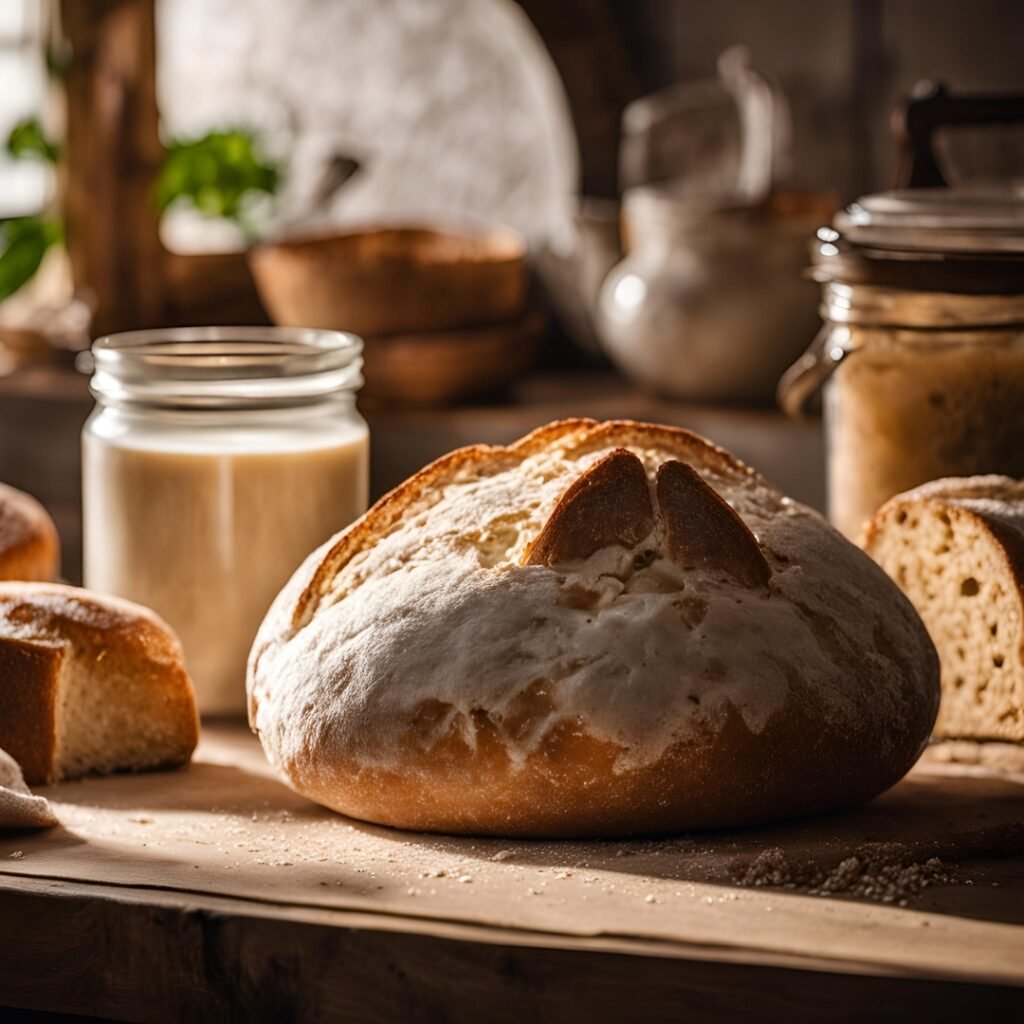
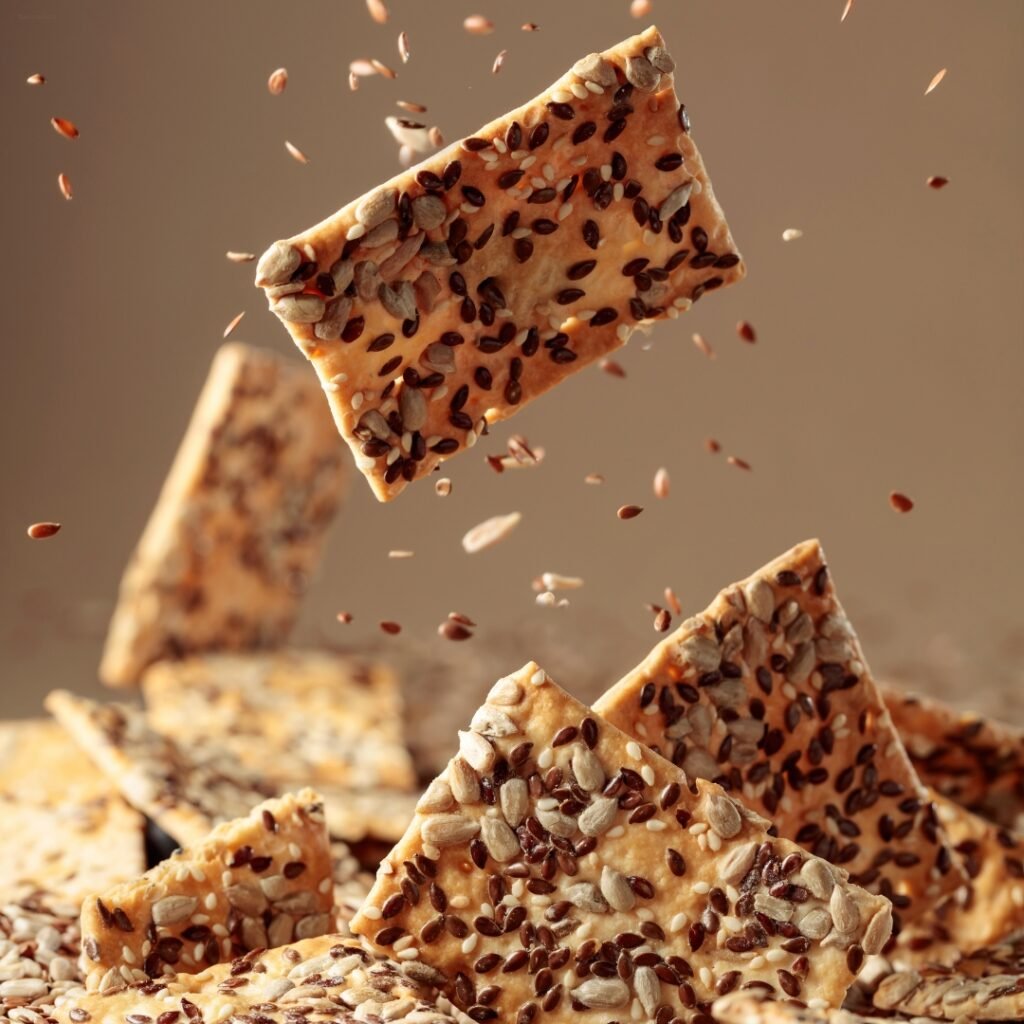
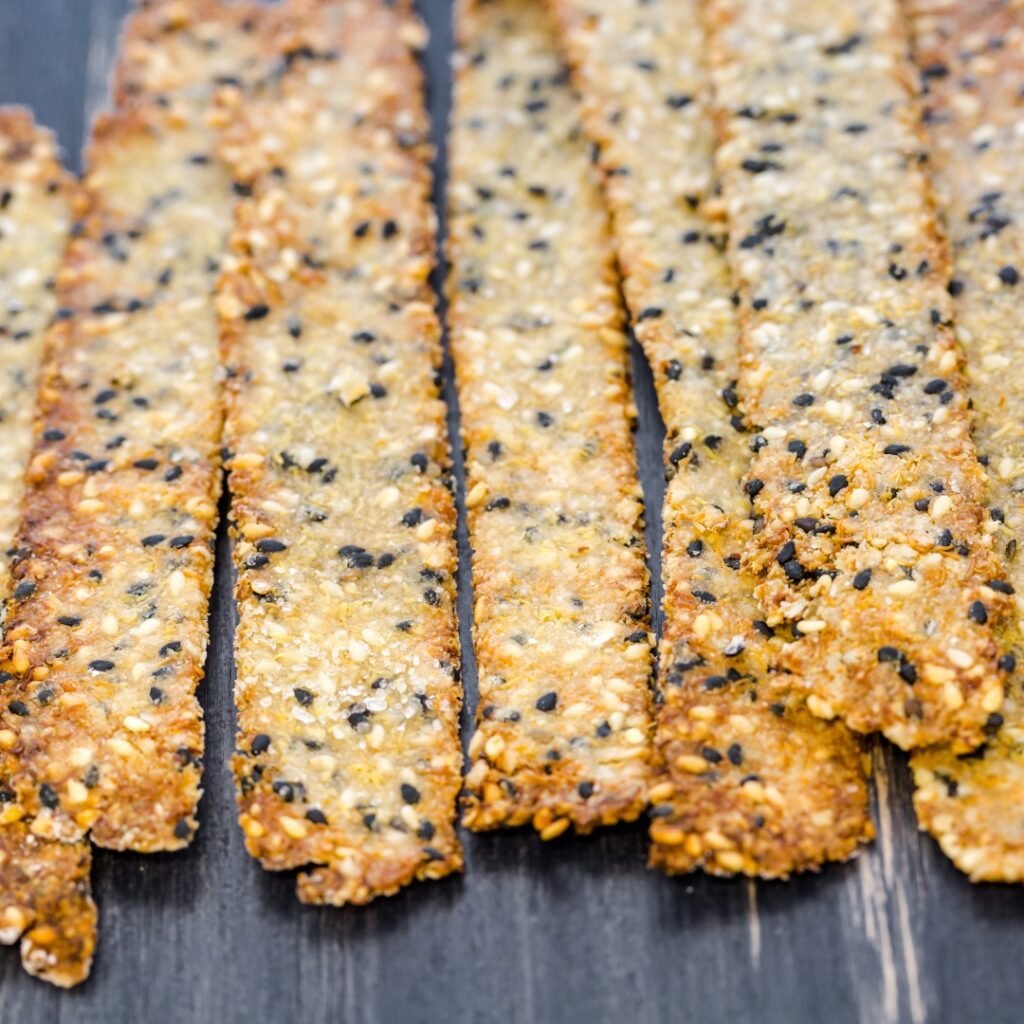
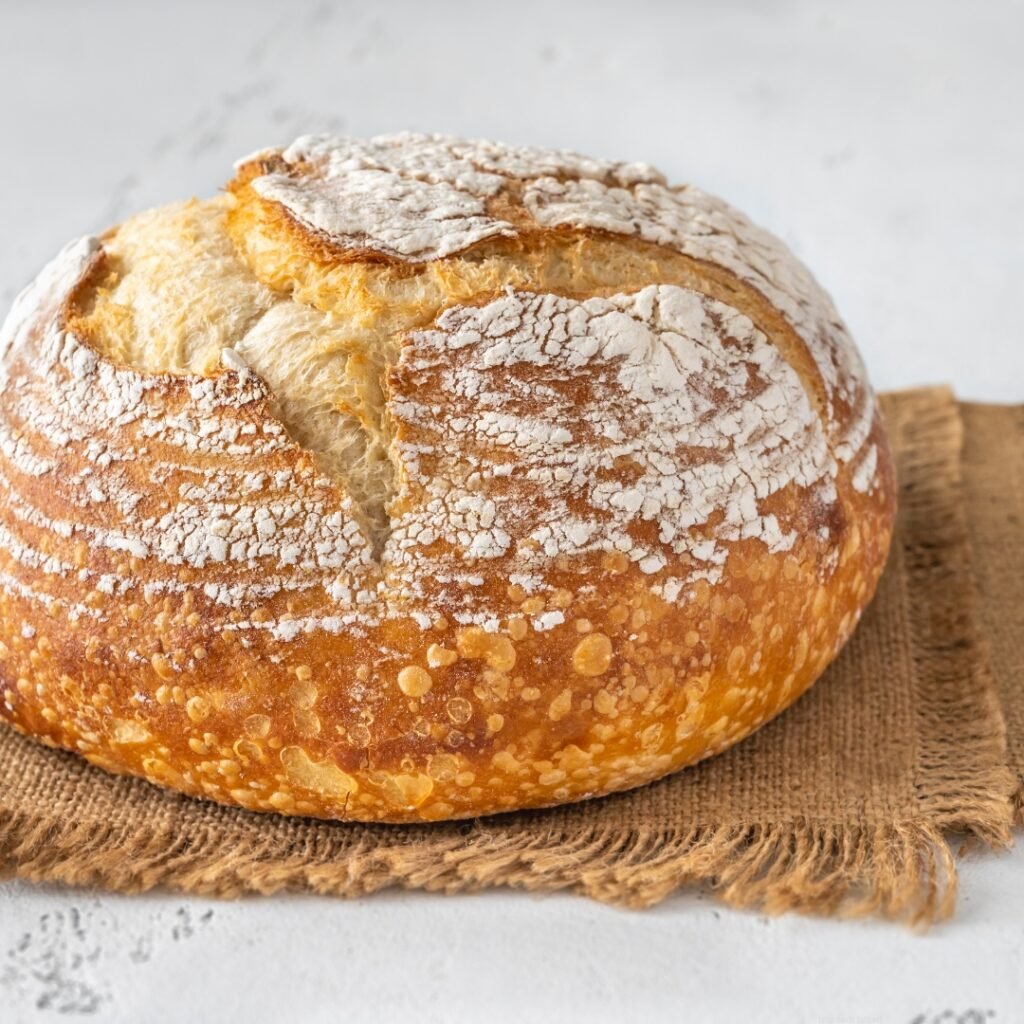
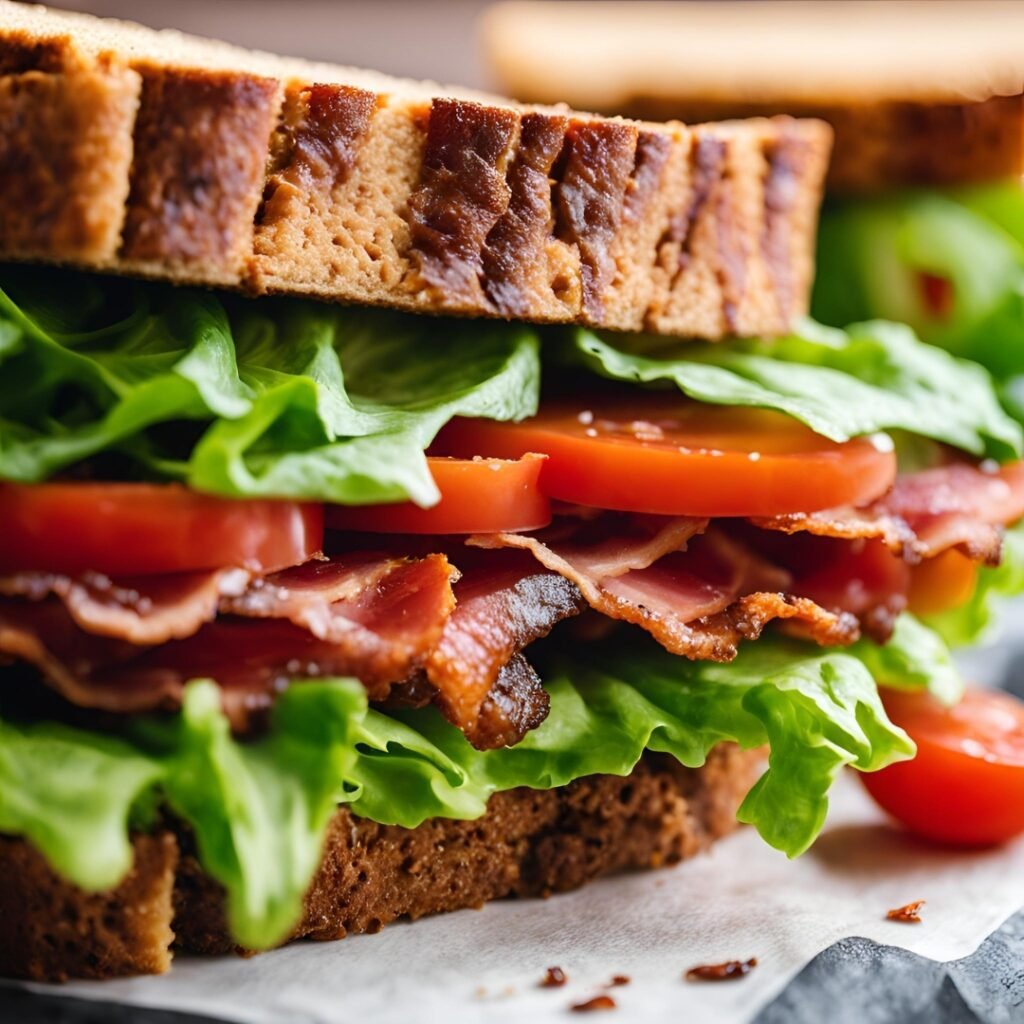
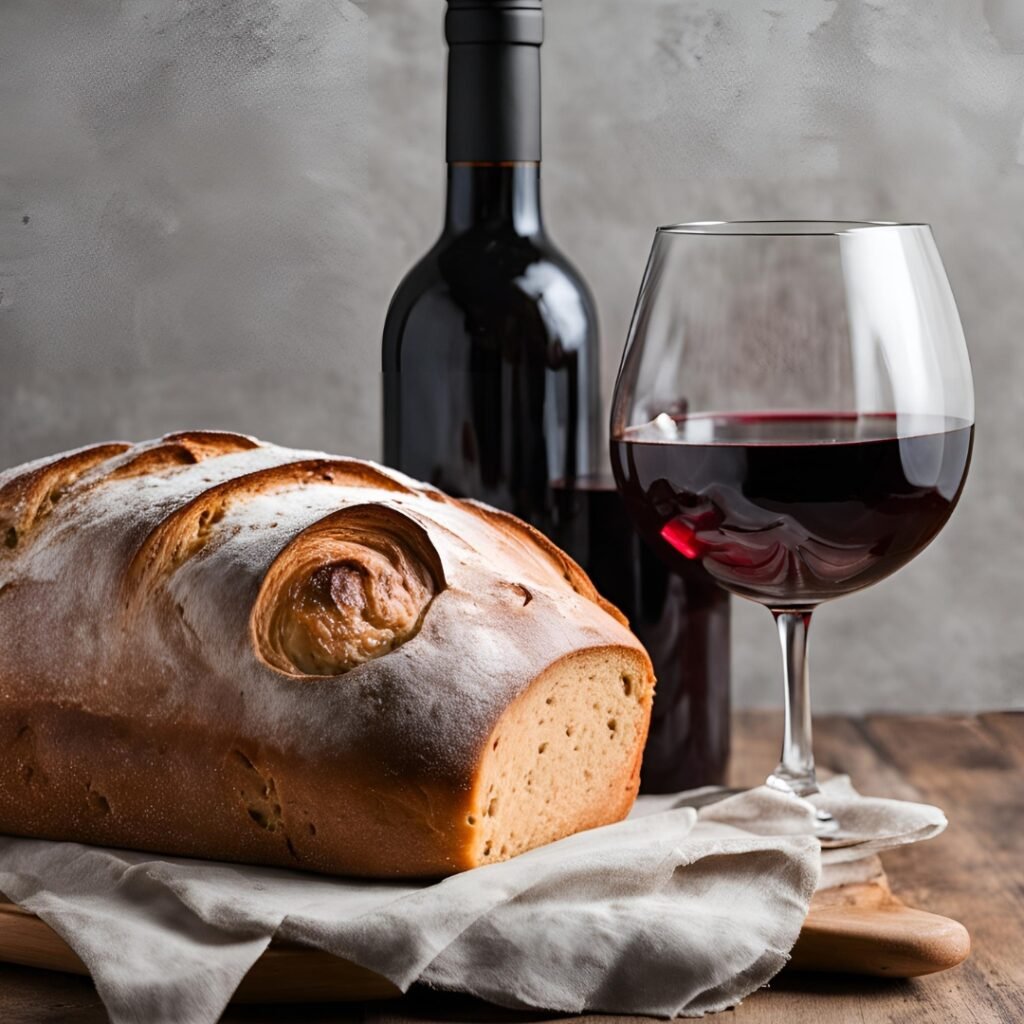
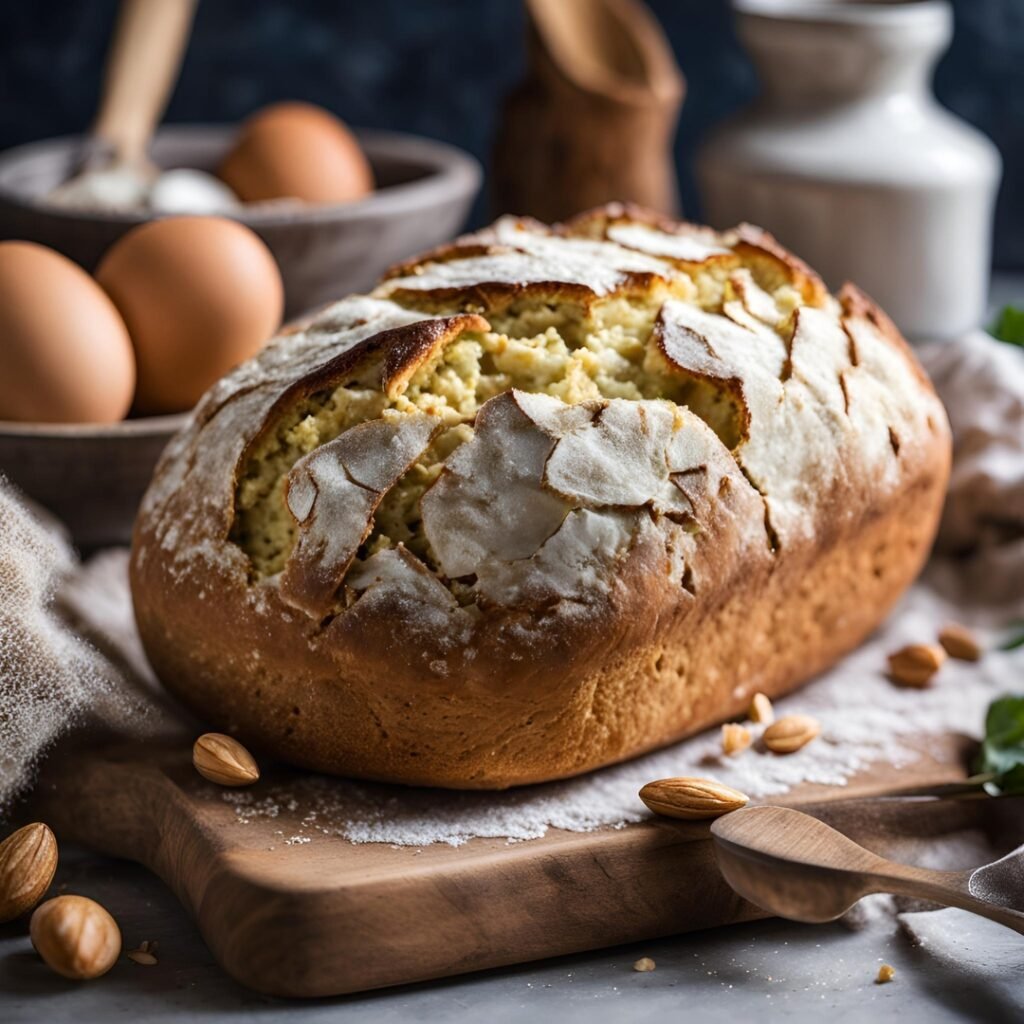
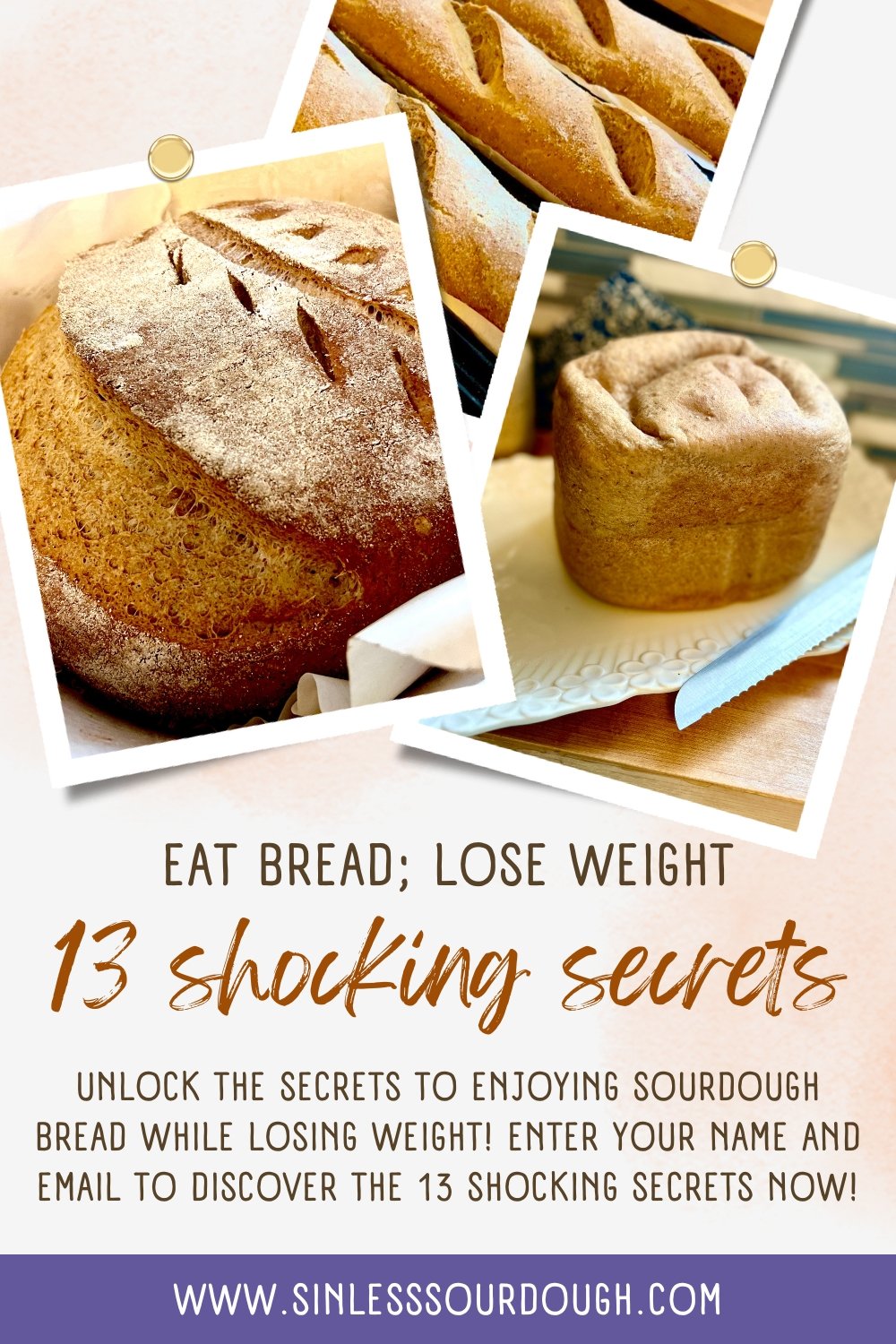
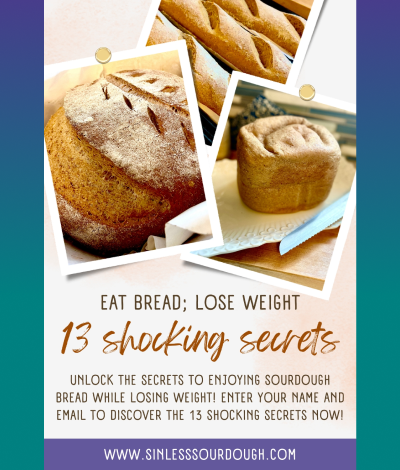
Responses